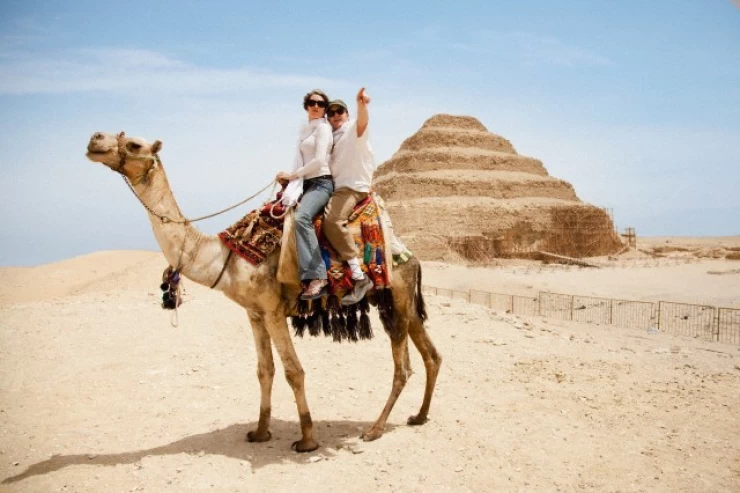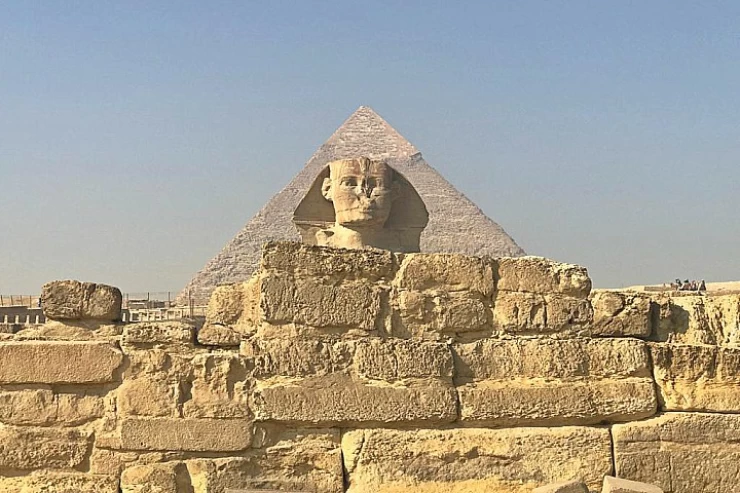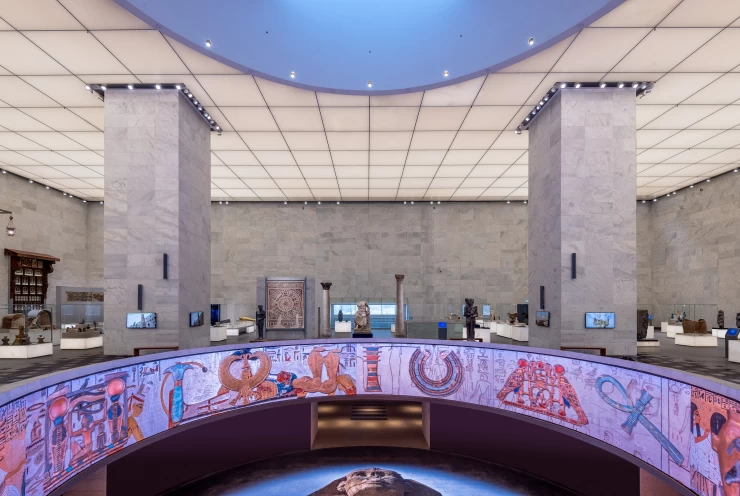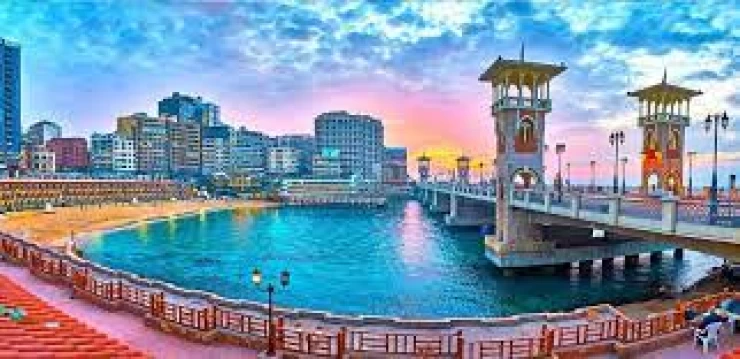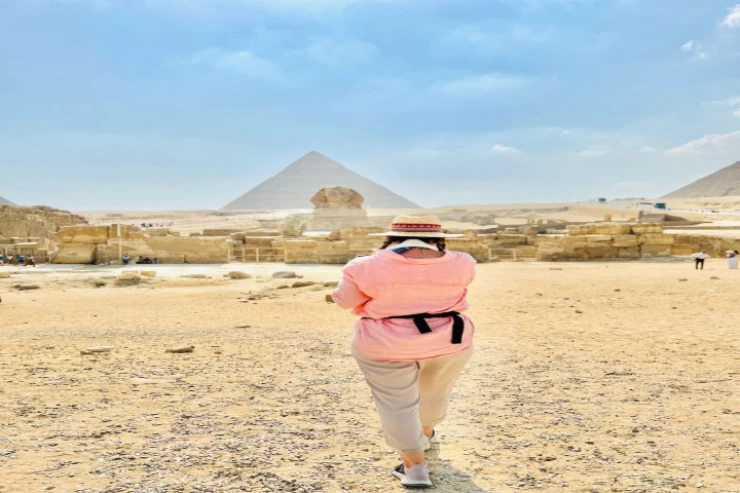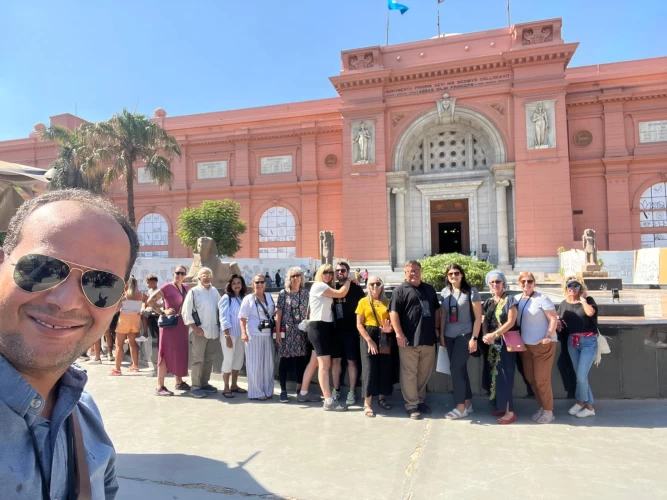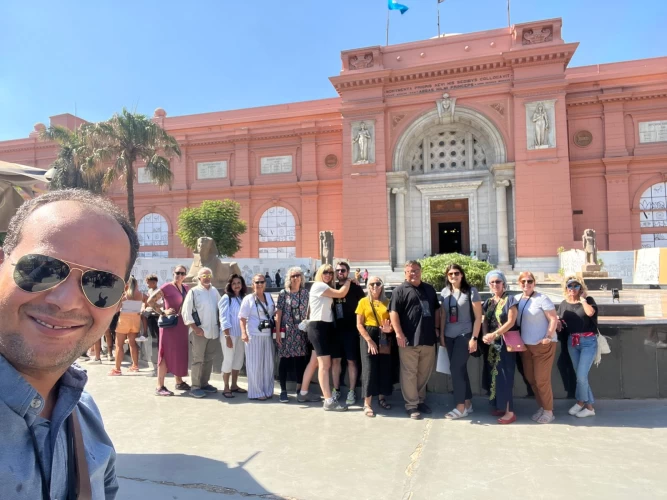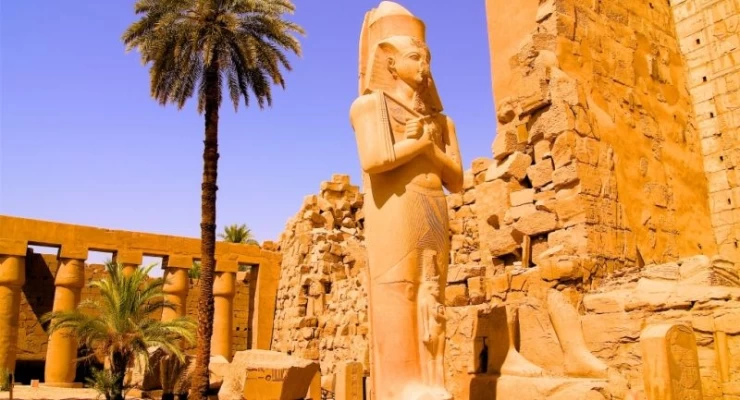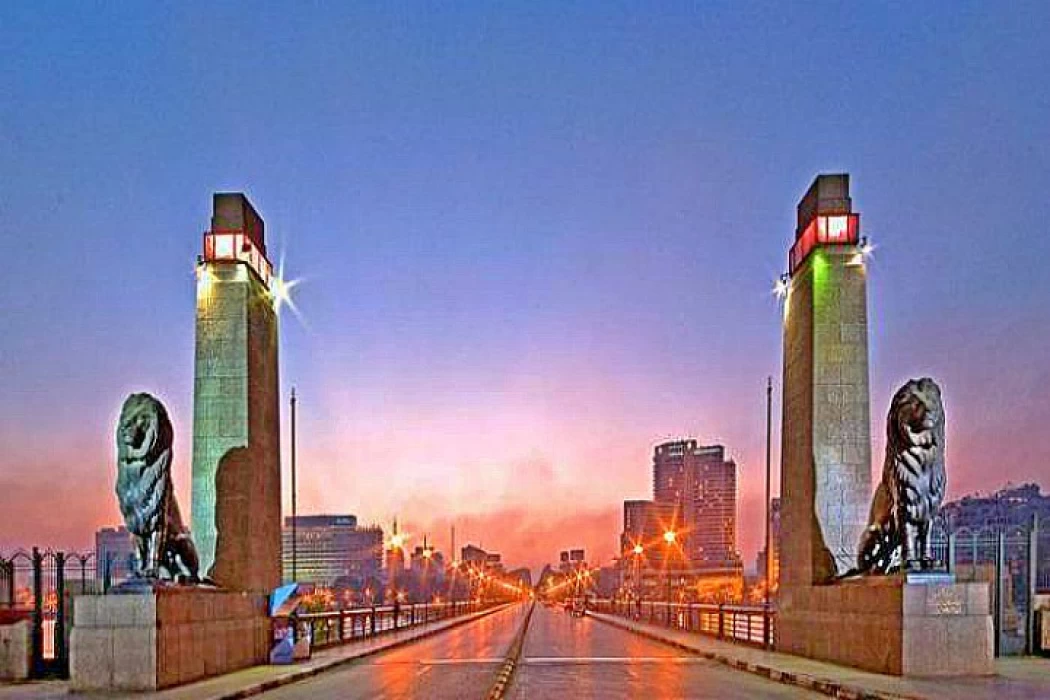
Qasr El Nil Bridge
The Qasr Al-Nil bridge finally protected
Witness of a glorious time in the history of Egypt, the Qasr Al-Nil bridge, decorated with the famous four lions, will finally be preserved and protected. Protection that comes through its inscription as a contemporary monument by the Egyptian Ministry of Antiquities, which must clean it, restore and consolidate it in order to preserve it. The bridge is in fact the first viaduct built on the Nile to link east and west of Cairo (Cairo to Giza). It all starts with the celebrations for the inauguration of the Suez Canal.
The Khedive Ismail decided to make the Egyptian capital, Cairo, the Paris of the Orient. So he built Ismaili Square (now Tahrir Square). To the west, he built several palaces and seraglio. The first was the Gezira Palace, which is the former pavilion of today's Marriott Hotel, built to house the French Empress Eugenie.
There was also the Giza Palace, whose garden was later transformed into a zoo. Two other seraglio palaces, dedicated to the sons of the khedive, were also built. They occupied what is now the Faculty of Applied Arts, not to mention the land that Princess Fatma, daughter of the Khedive Ismail Pasha, donated to help build the National University, the future University of Fouad I (now Cairo University). It was against this backdrop that the Qasr Al-Nil Bridge was built.
It was in 1869 that Khedive Ismaïl Pasha gave the order to build the bridge. ‘At a cost of 2.75 million francs at the time, the French engineer Pierre-Félix Moreaux, of the Fives-Lille company, built the bridge to plans by Linant de Bellefonds, then chief engineer of public works in Egypt. The work was completed in 1871,’ explains archaeologist Ayman Fouad Saïd. But the inauguration took place a year later, in 1872, after its solidity had been examined.
As part of the tests, ‘an artillery team consisting of 6 cannons passed over the bridge, which remained stable’, the archaeologist points out. The bridge can also be opened at certain times of the day to allow boats to continue sailing.
According to archaeologists, a metal bridge was urgently needed at the time. Before this bridge, people, animals and food were transported from Gezira Island to Cairo and vice versa via a floating bridge installed by the French army during the Egyptian Expedition (1799-1801). But accidents were common, causing a large number of casualties. So the bridge was built to link Ismaili Square to the Gezira Palace (now the Marriott Hotel).
Latest Articles
Admin
Aswan Governerate in Egypt
Aswan was known as ‘Sonu’ in ancient Egyptian times, meaning market, as it was a trading centre for caravans coming to and from Nubia. In the Ptolemaic era, it was called ‘Sin’ and the Nubians called it ‘Yaba Swan’. It was also known as the Land of Gold because it served as a great treasure or tomb for the kings of Nubia who lived there for thousands of years. Before the migration, Aswan's borders extended from Asna in the east to the border of Sudan in the south, and its inhabitants were Nubians, but after the Islamic conquest of Nubia, some Arab tribes settled there.
Admin
About Luxor Governorate in Egypt
The South Upper Egyptian area is home to the Egyptian governorate of Luxor. Its capital is Luxor, which was formerly Thebes, the capital of Egypt throughout multiple pharaonic eras. Its centers and cities are spread over both sides of the Nile River. The said governorate was established by Presidential Decree No. 378 of 2009, which was promulgated on the 9th of December of that year.
Admin
History of kafr El Sheikh Governorate
Kafr El Sheikh Governorate, located in the far north of Egypt in the Nile Delta, overlooking the Mediterranean Sea, is characterised by the diversity of natural life and environments, and is one of the Egyptian cities that can be visited after the end of the first semester exams at universities and schools, as it features many diverse tourist and recreational places at symbolic prices within everyone's reach.
Admin
Egypt's New Administrative Capital
The New Administrative Capital is considered the project of the era because it reflects a perfect image of the future and progress on the economic, cultural, social and civilisational level, as the capital is considered the new capital of Egypt at the present time. The importance of the New Capital is that it is a comprehensive transformation of the future of buildings, services and national and mega projects in Egypt.
Admin
Al Gharbia Governorate
The Governorate of Gharbia is inclusive in the geographical area of The Arab Republic of Egypt which is in the African continent, more specifically in the region surrounding the Nile delta, between Damietta and Rashid governance. To the control of the region from the north is Kafr El-Sheikh Governorate, from the south Menoufia Governorate, from the east – Dakahlia, Qalyubia Governorates, and to the west is the Beheira Governorate.
Admin
Hamata Islands (Qulaan Archipelago) in Marsa Alam
Each reserve has several sectors. In Wadi El Gemal Reserve, there is one of the natural areas called the Hamata area or Hamata sector in Wadi El Gemal Reserve. Its sectors are the perfect and most ecological, land and water, and host countless animals and plants found in the oceans and on the land.







